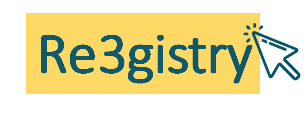About
FOSS4G 2022, the "Free and Open Source Software for Geospatial" conference, took place in Florence between August 22-28, 2022. The conference advocates for Free and Open Source Software for Geospatial applications, as the name suggests.

The 2022 edition, hold as a hybrid event, was the first FOSS4G Conference allowing physical attendance since the one in Bucharest in 2019. The edition scheduled in Calgary in 2020 was cancelled, while the 2021 edition expected to be held in Buenos Aires became an online event. The 2021 presentation on the Re3gistry is still accessible online.
Presentation
The 2022 presentation highlighted the reasons why a user could find the usage of a registry or reference code manager tool useful, the progress of Re3gistry software during the past year, and the upcoming functionalities to be developed.
Besides, it announced the inclusion of the latest version within OSGeoLive 15, a ready-to-use environment prepared by the OSGeo community, where users can easily test different geospatial software without caring about lengthy installation processes.
The application's current functionalities, including the software components and overall management, were shown during the presentation. Furthermore, it was emphasised how the community could collaborate on improving and developing the software further.
Also important to note are the changes implemented in the Re3gistry GitHub repository, including the publication of the development roadmap for the next two years, a new management strategy for the overall repository and several improvements in the documentation.
The given presentation was structured as follows: 
- Introduction to the Re3gistry
- Project & Community engagement
- Architecture and functionalities
- Where to find it?
- Who is using it? Versions and features
- Release plan
- How to contribute?
- Future plans and conclusions
Questions and Answer session

This feature is one of the software's main supported functionalities.
The Re3gistry works with IDs in the form of URI that are not only persistent identifiers but also resolvable URLs. In other words, URLs should always be working and showing the item's last version available.
More specifically, the Re3gistry URI links are composed of two parts.
Taking a real URI example: https://inspire.ec.europa.eu/layer/AD.Address
- The first part corresponds to the webpage domain: https://inspire.ec.europa.eu
- The second part is the path referencing an specific item: layer/AD.Address
The set of both parts becomes unique, due to the following reasons:
- The first part is unique because it corresponds to a valid online domain. Since the Re3gistry software is working in an online environment, the URI will always be unique because no one else could use the same domain. This could only happen in an isolated local environment where any root URL could be configured and used.
- The second part of the URI (local unique Id) will always be unique at instance / registry level because the Re3gistry software is not allowing duplicates by design. In the hypothetical case the same local Id was generated in different registry instances based on the Re3gistry (e.g. in different Member States), the first part (domain) will make the whole URI unique.
Presenters
Presented by Jordi Escriu (Joint Research Centre) and Juan Martín Pelegrina (Bilbomática) in collaboration with Óscar Martínez Olmos and Lorena Hernández.
More information
Learn more about the Re3gistry software on GitHub and Joinup.

